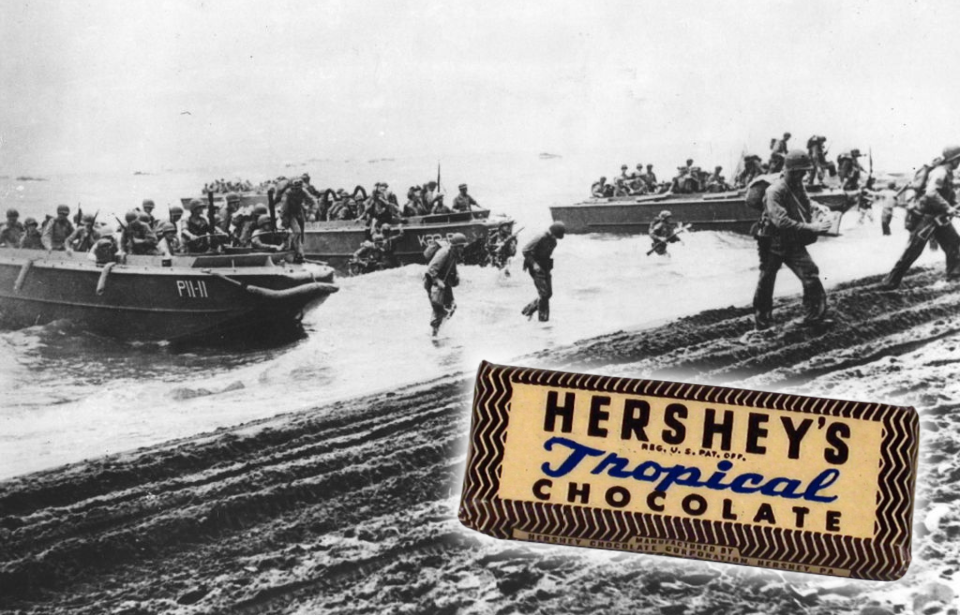As the Second World War raged on, the United States faced a myriad of challenges, one of which was ensuring troops remained well-fed and supplied with the necessary rations. A significant effort related to this was the development and introduction of the Hershey’s Tropical Bar, which had a great impact on the fighting that occurred in the Pacific Theater.
Before the Tropical Bar, Hershey’s introduced the Logan Bar
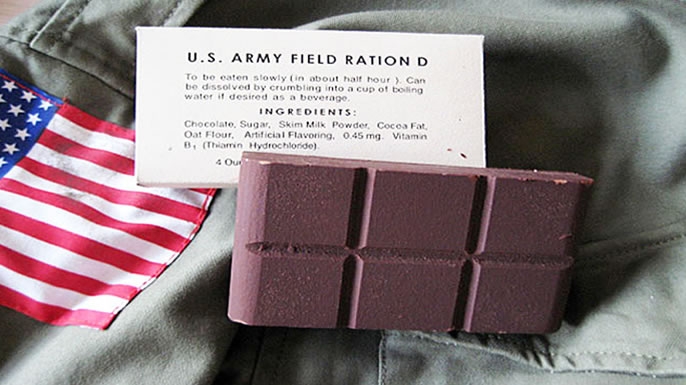
The first chocolate ration bar commissioned by the US Army was the Field Ration D, and Army Quartermaster Col. Paul Logan approached the Hershey’s Chocolate Company to develop it. It had to meet certain requirements: weigh four ounces, taste just slightly “better than a boiled potato” (the country was in the middle of the Great Depression), have a high food energy value and be temperature resistant.
The Field Ration D’s ingredients included chocolate, cacao fat, sugar, oatmeal, artificial flavoring, skim milk powder and vitamin B1. Initially, the mixture proved challenging to work with, as it became incredibly gooey, and new production methods needed to be developed, including manual kneading, weighing and molding each portion.
Successful field tests were conducted at various Army bases, and orders started to pour in. Between 1940-45, an estimated three billion bars were distributed worldwide.
However, despite its nutritional value, the chocolate was disliked by troops, due to its bitter taste. Some even referred to it as the Führer‘s “Secret Weapon” because of its effect on digestive systems. On top of this, those with poor dentition couldn’t eat it, and even servicemen with good teeth often had to shave slices off with a knife before consumption.
Developing a chocolate bar for troops in the Pacific Theater
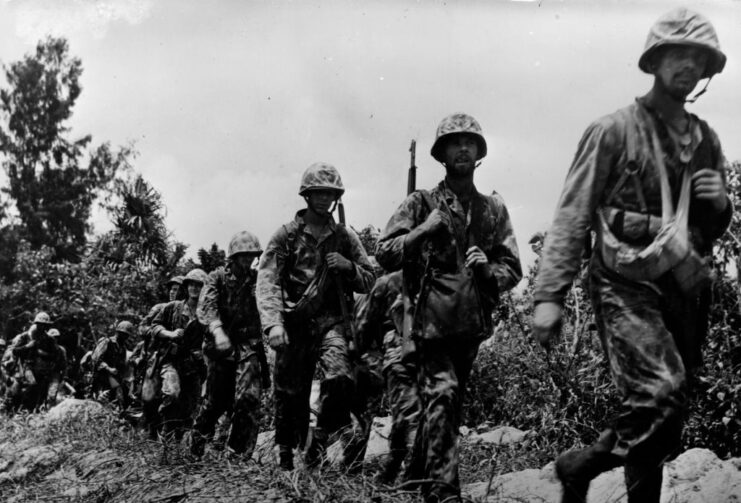
The Tropical Bar was developed by Hershey’s in response to the military’s need for a chocolate bar that could withstand the grueling conditions of the tropical Pacific Theater. In particular, the objective was to create a bar that wouldn’t melt at high temperatures, a problem that standard chocolate bars faced in the sweltering heat of the Pacific islands.
There was also another requirement: that it taste better than the Field Ration D, or “Logan Bar.”
What made the Tropical Bar different from regular chocolate?
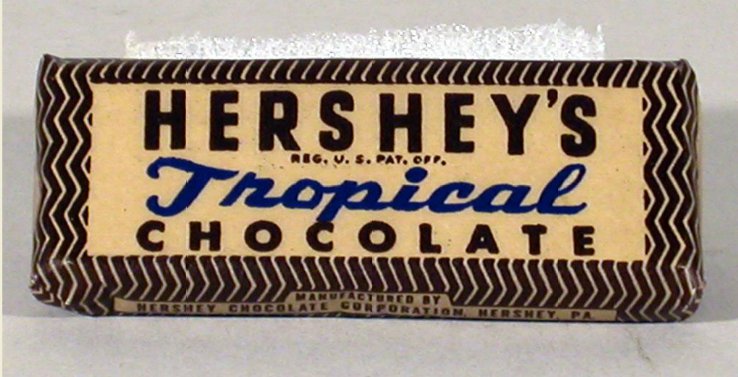
To achieve this, Hershey’s had to make some significant alterations to the company’s iconic milk chocolate formula, which lay in the composition of the bar. The Tropical Bar contained less cocoa butter and milk, making it more heat-resistant. It was said the bar could hold its shape for up to an hour at temperatures of 120 degrees Fahrenheit.
In addition, the chocolate was fortified with vitamins and minerals to ensure troops received some nutrition with their ration, similar to the Field Ration D.
However, these modifications came at a cost: taste. The Tropical Bar was notorious for its unpleasant, waxy and astringent flavor, definitely not what you’d expect when biting into a piece of chocolate. While it more closely resembled a regular chocolate bar in both its look and flavor, it was still a less-than-appetizing option for those serving on the frontlines.
Delivering the Tropical Bar to troops fighting overseas
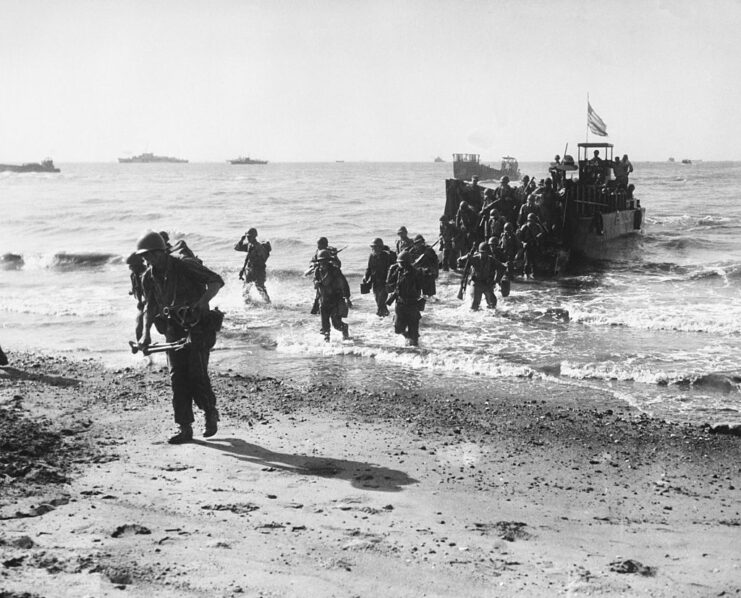
The Tropical Bars were widely distributed to those stationed in the Pacific, where temperatures could soar to levels not typically experienced in the US. Troops relied on them as a quick source of energy and comfort in the middle of the challenging conditions they faced.
It became a fixture in the rations of the American forces, and it played a vital role in boosting morale on the frontlines – or so the military hoped it would.
Falling short in the taste department
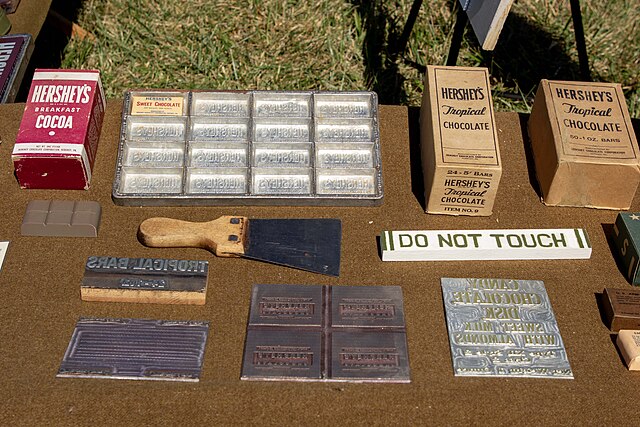
While the Tropical Bar was a marvel of military engineering, in terms of its resistance to heat, as aforementioned, it fell short in the taste department. Troops had mixed feelings about the chocolate, and many didn’t hesitate to voice their displeasure. Some even went so far as to nickname it the “dysentery ration,” as it was said only those with the illness could stand the flavor.
The unappetizing nature of the Tropical Bar led to various creative uses. Some used it as a form of currency, trading it with locals for other items or services – that is, until they, too, discovered its poor taste and refused to trade. Others found alternative ways to consume it, such as grating it into coffee or melting it down to create makeshift desserts.
It was the enduring utility of the bar, rather than its taste, that made it indispensable to servicemen. By the end of World War II, nearly 380,000 two-ounce bars had been produced for the military. The Field Ration D fell out of production almost immediately after the conflict came to an end, but the Tropical Bar was handed out in subsequent wars, including those in Korea and Vietnam.
Using the Tropical Bar to develop an enduring chocolate brand
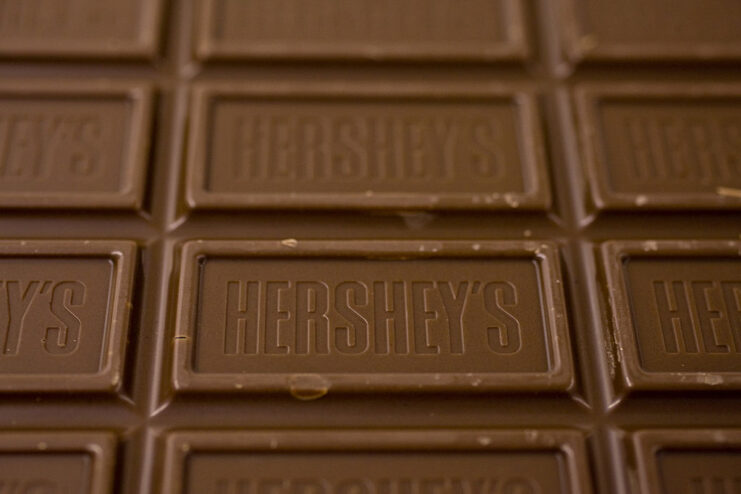
Following the Second World War, Hershey’s quickly acknowledged the limitations of the Tropical Bar’s taste. While it had been a wartime necessity, the company knew it needed to re-establish its reputation for producing high-quality chocolate.
In response to this, it undertook significant efforts to improve its products, resulting in the development of the Hershey’s milk chocolate we know today. The company invested heavily in research and development to enhance the flavor and quality, and it revisited its traditional milk chocolate formula, which had been altered during the war, and worked to bring back the rich taste that had made Hershey’s chocolate famous.
More from us: HMS Medusa (A353): The Ship That Marked the Way to Omaha Beach in June 1944
Through a series of adjustments, the company successfully rebranded its chocolate as a symbol of American quality.
